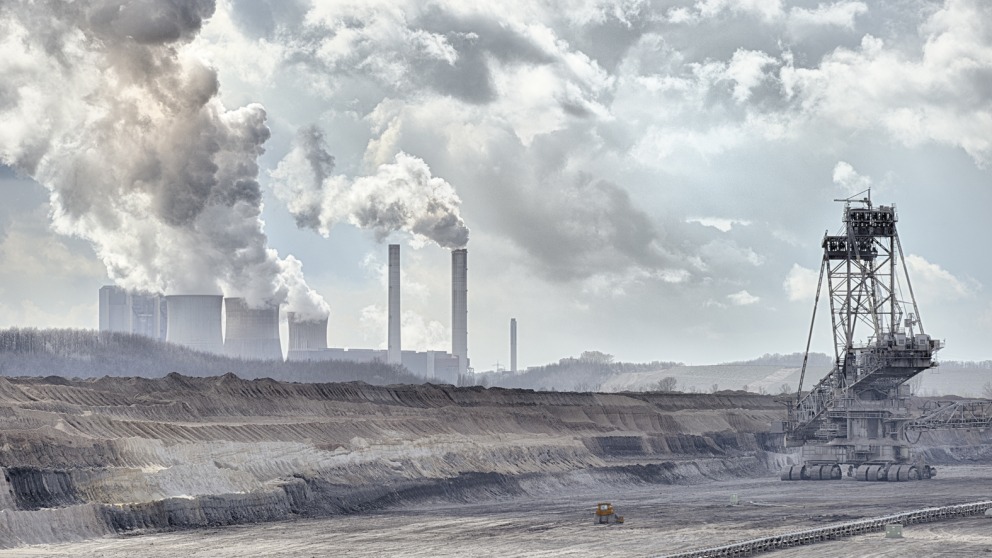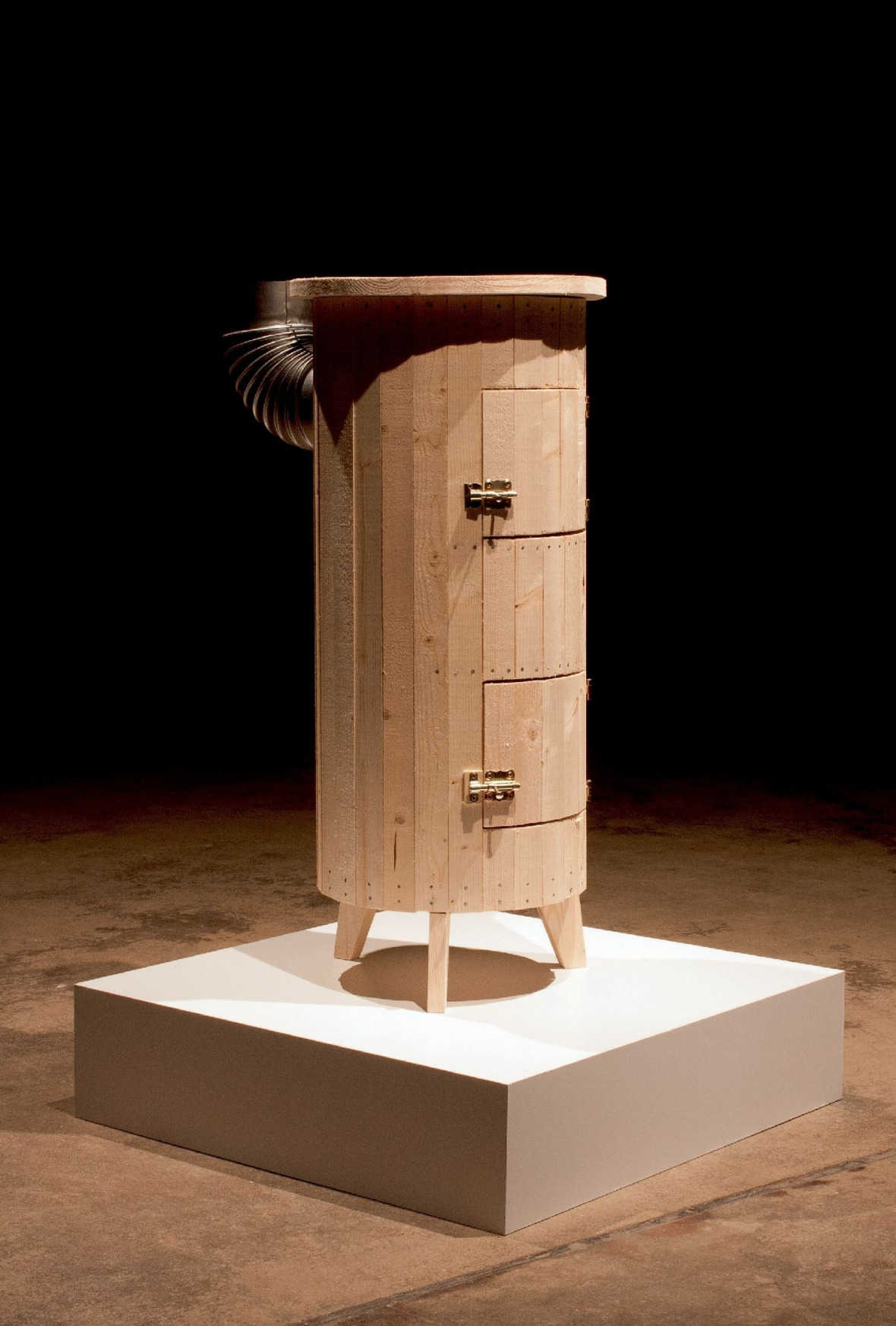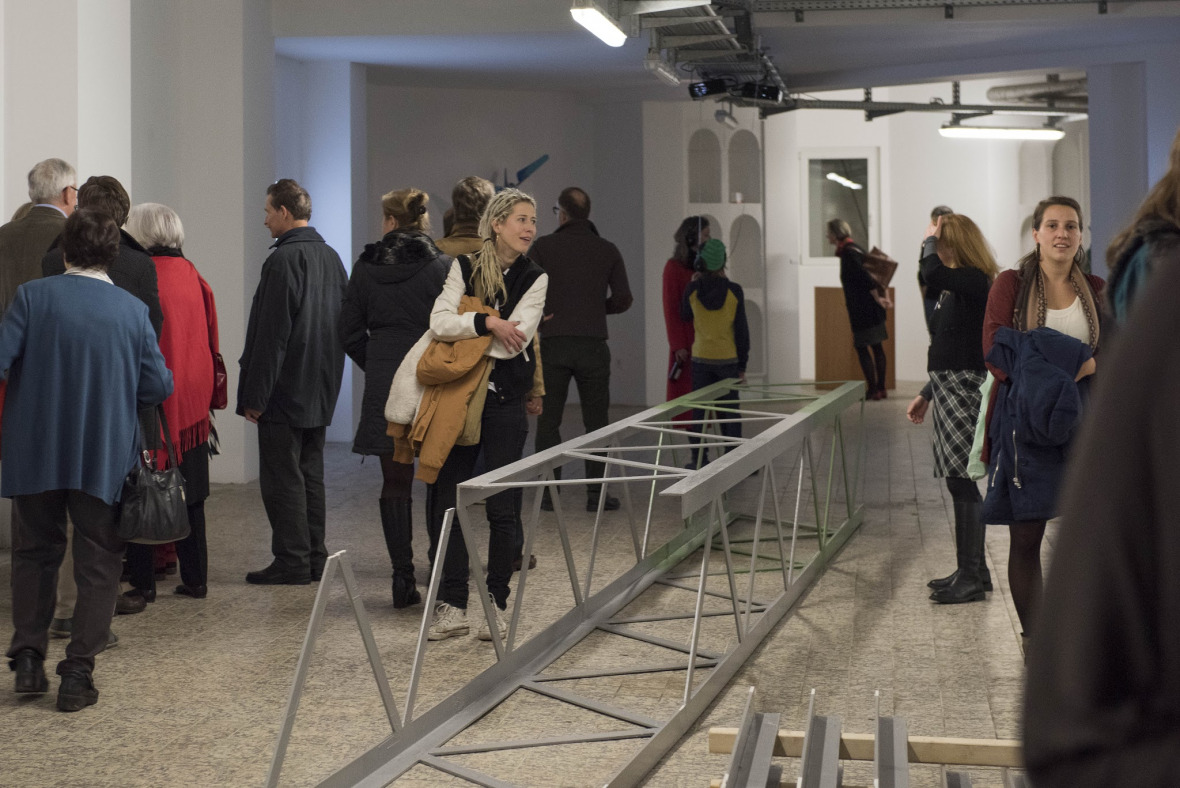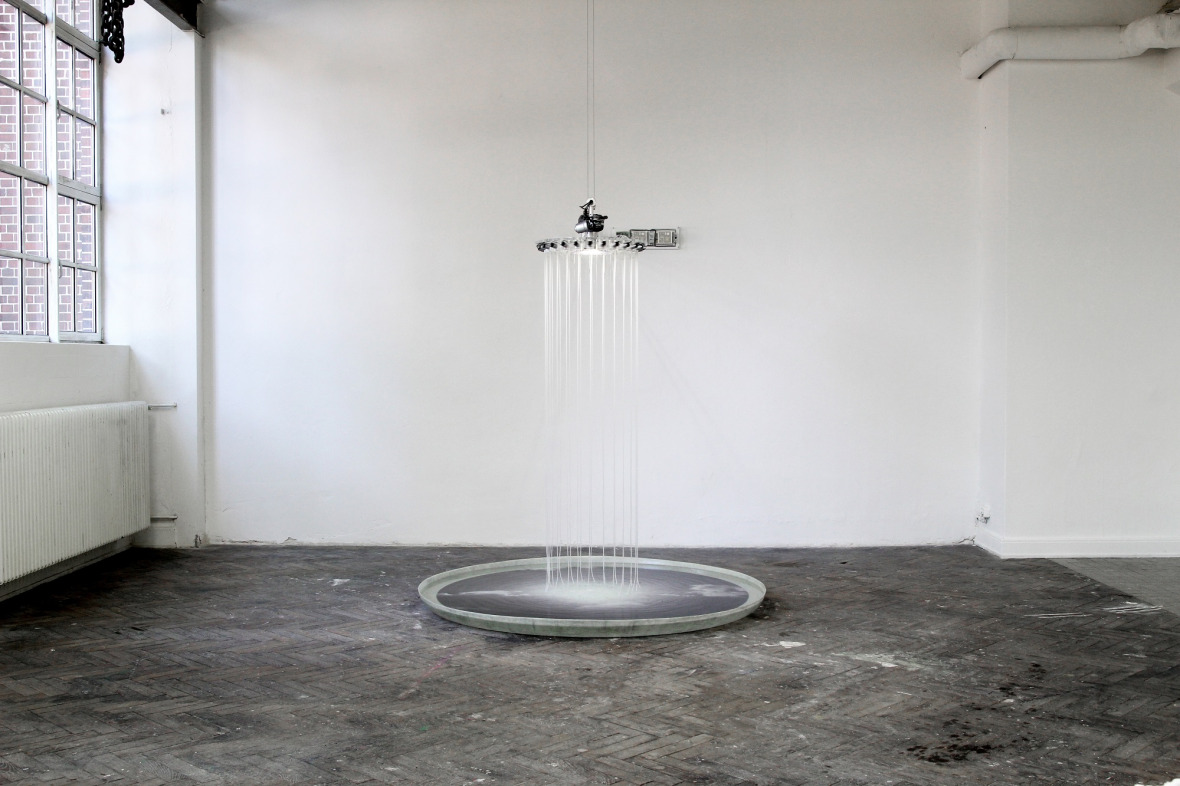Headline:
Technology, Aura, Dialogue: The “EnergyTransitionArt” Exhibition

In the basement, in an alcove that’s almost a small room, stands a small wood stove. If it weren’t on a pedestal, it would barely be a metre high; but even so it’s small, almost cute. The wood from which it’s made appears to be untreated; its whiteness is rustic, quaint, innocent.
It takes a minute to realise what’s wrong. A ‘wood stove’ should be a stove for burning wood – not one made of wood. It should make combustion possible without itself being combustible. This stove can – and must – burn: it will be set alight on the last night of the “EnergyTransitionArt” exhibition (28 November) to become only a memory after that. The associations prompted by this small work of art are wide-ranging: the thoughtlessness of our approach to ‘grey energy’ – the energy required to produce and transport objects; our fleeting observation of art and energy processes; and the sheer madness of our hunger for energy that will devour the planet’s last resources. We want shale gas not instead of but in addition to coal, and biofuels as a supplement rather than an alternative to oil. The stove is comical and disturbing at the same time.

Maybe this stove doesn’t treat the theme of the German energy transition in the narrow sense. But that’s not the purpose of art. Art is meant to facilitate a change of perspective, instantly connecting ideas that remain disparate as long as we follow a slow-moving logic that clings to the obvious facts. The exhibition is curated by art experts and energy experts, among them IASS Executive Director Klaus Töpfer. From more than 400 (!) submitted works, the jury had to pick twenty pieces for the exhibition, including three prize winners. The exhibition is being held in the new silent green cultural quarter, a former crematorium in the Berlin district of Wedding. After the hallowed atmosphere of the entrance, the ambiance becomes increasingly sterile and clinical, particularly in the basement, where a large part of the exhibition can be seen – often to the detriment of the works displayed there. In this atmosphere, objects such as a large fragment of an electricity mast that’s partly painted green or stunning photographs of landscapes formed by opencast mining suggest that the Energiewende is a technological project just like energy generation from fossil fuels once was: the art of engineering.

Yet the social aspect can easily escape the momentary observer, for example, in the case of that mast. There’s a story behind it: in the 1980s the artist’s father erected a mast on the family farm with the intention of generating renewable energy from wind, and he began to paint it green – but only managed to paint as far as his arms could stretch. The paintwork was never completed and the project of generating his own energy supply came to nought. The artwork tells us something about German tinkering and about political visions, environmental pioneers, failures, and ‘path dependencies’. It’s touching – but only if you read the short explanatory text. Otherwise, it recedes into a collection of often puzzling objects with a technicist aura, all of which are gathered in rooms whose walls seem to exude a memento mori. In the warm glow of a reading lamp, a wing-back chair in a corner with a comic about the social rise of an Energiewende commune contrasts sharply with its surroundings. But it is unable to banish the impression of sterile technicity.

Only a few works in this exhibition manage to break through this oppressive mood, even without an intellectual apparatus, purely by virtue of their aura. The prize-winning installation “Like Ice in the Sunshine” by the Hamburg artist Romina Farkas is one of them. A revolving construction of thin pipes is suspended over a photograph of a black-and-white sky covered with water. This water is sucked up through the pipes before it is released as a column of water at the centre of the circle. When this machine begins to twirl, it sometimes resembles a buttoned-up nun and at other times it seems to dance like an exuberant bride. The mechanism imitates the natural water cycle, capturing its beauty and its darker side – anthropocene art par excellence. Of course this installation does not speak directly about the Energiewende, but anybody who reflects on the purpose of the energy used here arrives very quickly at the question of the ‘energy’ between nature and culture, between a circular flow and ‘tapping’, and at questions of entropy and control. This is a work that covers a multitude and sparks ideas with its sensual presence.
You could write a lot about the individual works. Not all of them are as well placed as Farkas’ installation in the domed hall; not all of them are able to realise their inherent potential. For example, Karl Heiz Jeron’s sound installation, which randomly mixes sounds from a wind farm, is hard to appreciate as the composition it is, because of the technoid hum of a freezer box right beside it that converts the humidity in the room into water. As a result, you end up believing – far from the intention of Jeron’s installation – that wind farms apparently do ‘somehow make noise’. However, such disadvantages or difficulties – above all those that can be attributed to the atmosphere of the exhibition space – become relative when the exhibition fills with people. I had the impression that several hundred people attended the opening night. They chatted with the artists and among themselves. The silent green came to life, a new cultural space in a poor district. The cryptic objects in the exhibition became reasons to communicate, things to puzzle over and discuss. The extensive programme of events organised in conjunction with the exhibition and not least its catalogue will give even more reasons to continue these conversations. One can only hope that lots of people will sit up and take notice of “EnergyTransitionArt” – for the sake of the works displayed there and for the sake of the Energiewende.
„EnergieWendeKunst“ Exhibition until 28 November. Information on the exhibition, the programme of events and the competition can be found at: http://energiewendekunst.de
Top picture: Magomomentum (Annette & Martin Goretzki): Terraforming (B Version)
Photographs courtesy of EnergieWendeKunst.

Add new comment